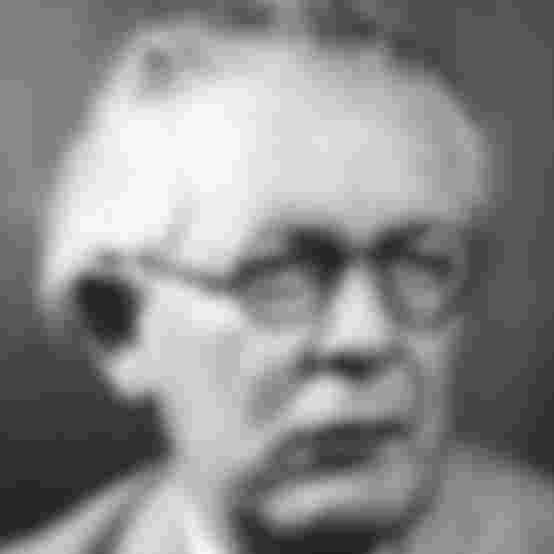THE BOMBING OF THE CITY OF NAGASAKI IN JAPAN
August 9, 1945

"A large cemetery with no standing tombstones" --- this is how witnesses who survived the deluge caused by the plutonium bomb explosion in the city of Nagasaki in southern Japan on this day in 1945 described it.
At 3:45 a.m., the B-29 Superfortress plane "Boxcar" flew from the island of Tinian, Northern Marianas carrying more than four tons of plutonium bombs named "Fat Man", to drop that bomb on the city of Kokura. . But that morning, the weather in the said city was bad and the plane's fuel supply was running low, so they moved to its alternative target, Nagasaki, 120 km southwest of Kokura. It was less cloudy in Nagasaki, and the bomb, which was dropped over the city's industrial valley, was hastened. The plutonium bomb exploded at 11:03 a.m. time in Japan, 47 seconds later from a height of 503 meters.
And since almost all buildings in Nagasaki are made only of light materials such as wood, Nagasaki saw more destruction caused by the very powerful forces caused by the atomic bomb and only concrete buildings such as the single Christian church. in Nagasaki, was left standing, and the city was nearly leveled by a very strong shockwave. However, the extent of the damage caused by Fat Man in Nagasaki was very small due to its valley topography, the shockwave of the atomic bomb was only trapped within the valley and the bomb damage did not spread further to the rest of the city. The explosion of the plutonium bomb in Nagasaki also destroyed important industries such as shipbuilding and heavy industries.
As many as 60,000 Nagasaki residents were immediately killed in the bomb blast, including more than 2,000 Koreans, 32 Chinese, eight Allied POWs, and more than 150 Japanese soldiers. The death toll from the Nagasaki blast has risen to more than 80,000 after the bombing, where many of them died of diseases caused by radiation exposure.
Like Hiroshima, Nagasaki was chosen to be the target of the atomic bomb because of its importance to the Japanese military, and before the Nagasaki bombing, President Harry S. Truman again warned that the United States would detonate atomic bombs on Japan if not it gave up soon. The morning before the bombing, the Soviet Union had invaded Japan's puppet state of Manchuria in China, and Japan was increasingly in a precarious position.
But contrary to popular belief, it was the Soviet invasion of Manchuria and not the bombing of Nagasaki that convinced the Supreme War Council in Tokyo to consider surrendering the war. Just six days later, the Japanese government announced their acceptance of the conditions of their surrender to Allies forces.
JEAN PIAGET WAS BORN
August 9, 1896

One of the prominent personalities in the field of psychology who was able to make important contributions to the study of the development of human intelligence was Jean Piaget of Switzerland. Today is his 125th birthday, born in 1896 in the town of Neuchâtel, Switzerland, and son of Arthur Piaget, a professor of literature, and Rebecca Jackson.
His interests and dedication to learning were first formed in his family, and at the age of 10 he became interested in the study of snails and other mollusks, and he has produced his scientific paper on mollusks and even sparrows. Piaget graduated from the zoology course in 1918 at the University of Neuchâtel and studied a semester of psychology with veteran psychologists Carl Jung and Paul Eugen Bleuer at the University of Zürich. She is also interested in various mother fields of psychology such as psychoanalysis and abnormal psychology.
In 1920 Piaget joined the psychologists Theodore Simon and Alfred Binet in Paris, France who studied and researched to measure the level of intelligence of children and link the age of the child to the development of his way of thinking. For Piaget, this raises questions about how children learn. Piaget said that factual knowledge should not also be considered as part of understanding the laws, but should rather let children open their imaginations if they are lacking in life experiences. He also realizes that there is no shortage of children’s power to reason.
During his six decades of being a child psychologist, he proposed the four steps of developing children’s mental thinking, or what we now call Cognitive Development Theory. The first stage from the child’s very birth to the age of two is the Sensorimotor Stage, where the child learns through action or his motor skills. In the Preoperation Stage Mila ages two to seven, children's intelligence is gradually developed through symbols, fantasy play, and natural intuition. In the Concrete Operational Stage from ages eight to 11, the child’s cognitive intelligence is based on the use of logic according to actual and solid evidence. Finally, there is the Formal Operational Stage where at the age of 11 to 15, children can think abstractly with a more complex understanding of logic and the cause and effect of things. Piaget based his proposed theory on the concept of the schema, or the cognitive structures that cause easier understanding of our world, which helped in understanding Piaget’s theories.
His proposed theory had a great impact on the study of psychology and especially on the study of the proper provision of education to young people, but some scholars criticized his proposed theory because it did not take into account the geographical that differences of children. However, Piaget also received awards and praise from his peers and has written more than 50 publications and scientific papers. Jean Piaget once said, a reflection of his high view of education, that only education can save our society from eventual collapse.
Piaget died for unknown reasons at the age of 84 on September 16, 1980, in Geneva, Switzerland.
PRESIDENT FERDINAND MARCOS SIGNED PRESIDENTIAL DECREE NO. 272 ESTABLISHING THE STEEL AUTHORITY
August 9, 1974
On this day in 1974, the Iron and Steel Authority (ISA) was created by Presidential Decree no. 272 signed by President Ferdinand Marcos.
According to PD 272 signed by President Marcos, the purpose of the establishment of ISA is as follows:
Strengthen the steel industry and steel products in the Philippines, and expand the scope of its internal and external trade,
To promote the unity and cooperation and integration of the steel industries in the Philippines, which will increase the volume of steel products produced in the country,
Organize the sale and distribution of steel to create a balance between demand and supply of steel,
Encourage the steel industries in the Philippines for total production, and
Reduce the dependence of the steel industries on imported raw materials and help them to have adequate raw materials at a low cost.
This agency consists of a Chairman of the Board of Investments as head of ISA, Secretaries of National Defense, Finance, Industry and Trade, Chairman of the Development Bank of the Philippines (DBP), and Governor of the Central Bank of the Philippines and about two representatives from the private sector who are from the steel industry are the members of ISA. All of them are appointed by the President, except for the head of the Board of Investments who will also be the Chair of the ISA.
ISA had only five years to perform its obligations, but it was again extended with the effect of Executive Order 555, signed by President Marcos on August 31, 1979.
References:
History.com Editors (2021, April 26). The bombing of Hiroshima and Nagasaki. HISTORY. https://www.history.com/.amp/topics/world-war-ii/bombing-of-hiroshima-and-nagasaki.
Wikipedia (n.d.). Atomic bombings of Hiroshima and Nagasaki. https://en.m.wikipedia.org/wiki/Atomic_bombings_of_Hiroshima_and_Nagasaki
Biography.com Editors (2020, July 10). Jean Piaget. The Biography.com website. https://www.google.com/amp/s/www.biography.com/.amp/scientist/jean-piaget
Wikipedia (n.d.). Jean Piaget. https://en.m.wikipedia.org/wiki/Jean_Piaget
The Kahimyang Project (n.d.). Today in Philippine history, August 9, 1974, presidential decree no. 272 created the Iron and Steel Authority. https://kahimyang.com/kauswagan/articles/2450/today-in-philippine-history-august-9-1974-presidential-decree-no-272-created-the-iron-and-steel-authority

